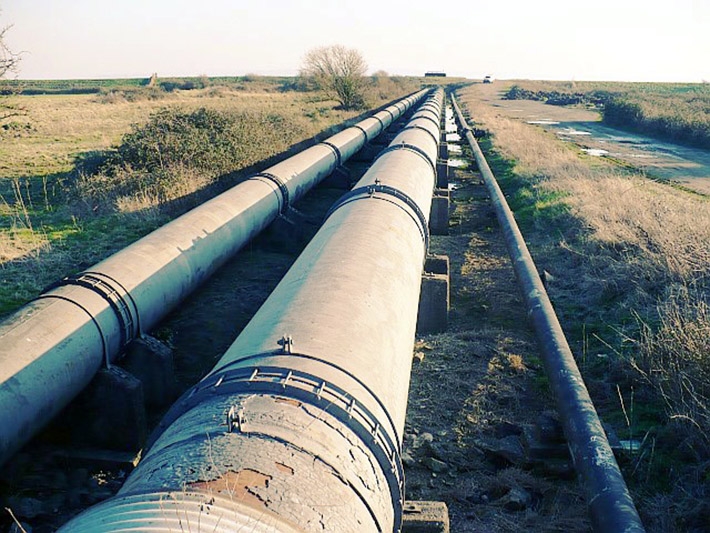
Pipelines, Politics, and Policy
In recent years in Canada, the development of new pipelines has become a hot button issue. Chris Bloomer, President, and CEO of Canadian Energy Pipeline Association makes the case for pipelines and their importance to Canada’s economic prosperity.
Proponents of pipelines in Canada often cite energy security, economic growth and jobs as factors to keep building them. Opponents raise issues of environmental impact, including the potential pollution of water, the increased likelihood of oil spills, increased carbon dioxide emissions and damage to sensitive environment ecosystems and aboriginal lands .The reality is somewhere in between. Canada is an energy exporter and companies require the ability to get this resource to market. Most agree that the alarming increase in the amount of oil being transported on trains each year in Canada is dangerous and not sustainable. Ottawa Life Magazine is presenting all sides of the pipelines debate, and in this issue we interview Chris Bloomer, President and CEO of The Canadian Energy Pipeline Association (CEPA). CEPA represents Canada’s transmission pipeline companies who operate approximately 119,000 kilometres of pipeline in Canada and 15,000 kilometres in the United States. These energy highways move approximately 1.2 billion barrels of liquid petroleum products and 5.4 trillion cubic feet of natural gas each year. CEPA members transport 97 per cent of Canada’s daily crude oil and natural gas from producing regions to markets throughout North America.
$11.5B
The amount that Canada’s
energy transmission
pipelines contributed to
our gross domestic
product in 2015.
OTTAWALIFE: What would you say are the three best arguments for building pipelines in Canada?

Pipelines are by far the safest and most efficient method of transportation. This is not only due to the industry wide commitments to improving safety and environmental performance, but also due to the robust regulatory environment in which pipelines are approved and operate. In 2015, the transmission pipeline delivered natural gas and liquids petroleum products with a 99.99 per cent safety record.
Market access is also of critical importance. Without more diverse and better access to markets, the Canadian economy will not achieve full value for its resources and stands to lose more than a $1 trillion in gross domestic product (GDP) over the next 25 years, and more than $270 billion in tax revenue over the same period. Transmission pipelines are the only viable option to move large quantities of oil and natural gas to new markets in a manner that emphasizes excellence in safety and environmental protection.
As we have seen with current projects, it can take years, sometime decades for pipeline projects to go through the approval process, be constructed, and to commence operations. According the International Energy Agency (IEA), world energy demand will grow by about 33 per cent between 2015 and 2040. And although the use of renewable energies is expected to increase rapidly, so will oil usage to meet this growing demand.
OTTAWALIFE: All pipelines are not the same. Some are built to carry certain types of oil but not heavier grades. What are the industry standards for what types of substances/fuels are carried in pipelines?
Pipelines in Canada must be designed, constructed and operated in accordance with the requirements of CSA standard Z662 (which Canadian Regulations adopt). When designing a pipeline the service (product) will be taken into consideration to ensure the proper calculations are used, which in-turn will dictate the material to be used, number of pump stations, and number and locations of valves.
OTTAWALIFE: Opponents to pipelines often say these projects only cause further dependency on fossil fuels as the pipelines are used to move Canadian fossil fuels to foreign markets. Is this a fair statement? If not, why?
The industry recognizes that renewables and fossil fuels must coexist to supply the world with a constant source of energy into the future. However, making the transition to a greener energy portfolio will take time, and fossil fuels will play a critical role in supporting that evolution.
Another important issue is energy poverty. According the International Energy Agency (IEA) over a billion people don’t have access to basic energy services, even in some areas of Canada. Our country can play a significant role in helping to reduce energy poverty by sharing innovative ideas and technologies and by distributing more of our energy to global markets whether it be oil, natural gas or hydro-electric power.
OTTAWALIFE: What are the real numbers in terms of jobs created by pipeline building in Canada? Can you be specific in terms of the numbers and types of jobs created (full-time versus part-time or contract jobs etc.)?
The transmission pipeline industry is responsible for almost 34,000 full-time equivalent jobs across Canada, supporting many households.
OTTAWALIFE: What types of trades’ workers are involved in building Pipelines?
Please visit aboutpipelines.com and read the CEPA Foundation performance report. There is information about the engineering, design, construction and manufacturing companies who play a crucial role in our industry.
OTTAWALIFE: Can you explain the link between pipelines and refineries?
Oil pipelines are connected to refining infrastructure in North America and would link to the world’s refineries with access to tidewater.
OTTAWALIFE: What is the industry policy with regards to spills when they happen and sharing that information with the public?
Regulatory requirements are quite stringent when it comes to what a company must do when they have a leak on their pipeline. Incidents must be reported to the regulator who will require the company to provide details of their investigation (into the incident) once it is complete. CEPA and its member companies believe that it is important for Canadians to understand the performance history of our industry, so we have created an online searchable map that identifies the location of pipelines operated by our members, and just this past September we included incident history. Further embracing the principle of transparency, CEPA is publishing on an annual basis a report on performance, which clearly lays out where the industry is doing well and where there exists opportunities for improvement.
OTTAWALIFE: Is there an industry-wide standard and policy related to spills when they happen?
CEPA and its members are focused first and foremost on pipeline safety and the prevention of all incidents throughout the entire lifecycle of pipelines, as evidenced through CEPA Integrity First®. CEPA Integrity First® is an industry-led program established by CEPA to demonstrate commitment to continuously improving in the areas of safety, environment and socio-economics.
Integrity First® brings together some of industry’s greatest minds and most influential leaders to define, share and implement leading practices to improve performance in critical areas. The program enables CEPA’s member companies to work collectively to strengthen the pipeline industry’s performance, engagement and communications. CEPA’s members recognize that no incidents are acceptable and through adherence to Integrity First®, which is a condition for CEPA membership, they collaborate on everything related to safety and hold each other accountable to continuously improve their operating performance.
OTTAWALIFE: Are CEPA and your partners concerned about the increasing amount of fuel being transported by rail? Do you have any figures to show how pipeline construction will decrease the amount of fuel being transported by rail?
Pipelines are the most cost-effective way to transport crude oil. They require significantly less energy to operate than trucks or rail and have a much lower carbon footprint. While the move-ment of crude by rail has significantly increased and rail is one complemen-tary mode of transportation, it is not necessarily a safer mode of transportation. We view other modes of transportation, such as rail or trucks, as a complement to pipelines. Transmission pipelines in Canada transport 3.3 million barrels of oil per day — that would be equivalent to 4,200 rail cars or 15,000 tanker trucks.
99.999
The per cent safety record
for delivery of petroleum
products by CEPA
member companies, in 2015.
Source CEPA












